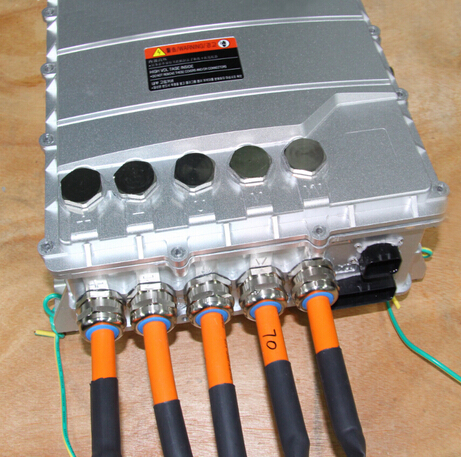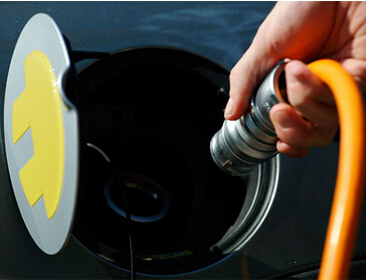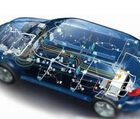Electric vehicles are not environmentally friendly, and even more polluting the environment?
Such "electric vehicle pollution theory" has a market in China. A report from the China Automotive Engineering Society gives more than half of the answers, in the stage of electric vehicle fuel generation and operation - which can be understood as including power generation and driving stages, energy saving and emission reduction. The effect is obvious, no doubt more environmentally friendly than the fuel car.

However, the report of the China Automotive Engineering Society is not a “full life cycle” evaluation of the reduction of the material cycle (acquisition, transportation, processing, manufacturing and recycling of automotive raw materials, such as power battery raw material mining and production recycling). The effect of the row, the report has not been covered.

This result was disclosed by the China Automotive Engineering Society in the September 4th "Car Life Cycle Greenhouse Gases and Air Pollutant Emissions Evaluation Report" (2018) (hereinafter referred to as the "Report").
The Report evaluated greenhouse gas and atmospheric pollutant emissions for the fuel cycle of petrol passenger cars and pure electric passenger cars. The results show that in the automotive fuel cycle (including the upstream phase and operating phase of the automotive fuel cycle), the efficiency of greenhouse gas emission reduction for pure electric passenger vehicles is better than that of oil vehicles by 35%; pure electric passenger vehicles can significantly reduce VOCs and NOs. Emissions help to improve urban air quality, but since the main domestic electricity source is coal-fired power generation, PM2.5 and SO2 of some pure electric passenger vehicles do not emit less fuel cycles than fuel vehicles.
First, the fuel cycle (including power generation and driving links) evaluation results
The Report's assessment of emissions from the vehicle fuel cycle (WTW) consists of two phases: (1) Well to pump (WTP): including primary energy extraction, transportation and storage, and fuel Production, transportation, distribution, storage and other stages. (2) Automobile fuel cycle (pump to wheels, PTW): the fuel consumption phase of the vehicle operation.
Corresponding to the evaluation model in the group standard "Evaluation method of greenhouse gas and air pollutant emission from automobile life cycle" released by the Automotive Engineering Society on September 3, the "Report" released only the evaluation results of EFWTP × EC and EFPTW. , not a complete EF (emission factor) value.

The greenhouse gases involved in this group standard of the China Automotive Engineering Society mainly include carbon dioxide (CO2), methane (CH4), nitrous oxide (N2O), hydrofluorocarbons (HFCs), and perfluorocarbons as defined in the Kyoto Protocol. Carbides (PFCs) and sulphur hexafluoride (SF6), the latter five gases are calculated as CO2 equivalents based on the global warming potential (GWP) of the 100-year time scale of different substances.
(1) The results of the two types of passenger vehicles in the upstream stage of the automobile fuel cycle (well to pump, WTP):
The greenhouse gas and atmospheric pollutant emission factors in the upstream stage of the fuel cycle of gasoline passenger vehicles are shown in the following table –

The greenhouse gas and atmospheric pollutant emission factors in the upstream stage of the pure electric passenger vehicle fuel cycle are shown in the following table –

From the above evaluation results, it can be seen that in the upstream stage of the fuel cycle, the greenhouse gas and atmospheric pollutant emissions of pure electric passenger cars are significantly lower than that of gasoline passenger cars, especially the latter four indicators.
(II) Emission results of two types of passenger vehicles in the pump to pumps (PTW) phase:
The Report compares the emissions of two types of passenger cars at this stage from two paths, one based on the evaluation and comparison of the average fleet level, and the other based on the evaluation and comparison of typical models.
1. Emission factors based on the average fleet level
(1) Energy consumption and greenhouse gas emission factors:
Average fuel consumption: 6.7L/100km for petrol passenger cars and 16.2kWh/100km for pure electric passenger cars
Greenhouse gas emission factor: 152g/km for petrol passenger cars and 0 for pure electric passenger cars.
(2) Air pollutant emission factors
The atmospheric pollutant emission factor of the pure electric passenger car during the operation phase is 0g/km.
The atmospheric pollutant emission factors during the fuel cycle operation phase of gasoline passenger vehicles are shown in the following table.

It can also be seen from the above two indicators that the emissions of greenhouse gases and atmospheric pollutants of pure electric passenger vehicles during the fuel cycle operation are also significantly better than those of gasoline passenger vehicles.
2. Based on emission factors of typical models
In the research stage, the report selected the typical models of various types of passenger vehicles from A00 to C, and measured the fuel cycle emission factors.
(1) Energy consumption and greenhouse gas emission factors:
The greenhouse gas and atmospheric pollutant emission factor of pure electric passenger vehicles is 0g/km, and the energy consumption levels of all types of pure electric passenger car models are shown in the following table:

The energy consumption and atmospheric pollutant emission factors for typical models of petrol passenger cars are shown in the following table:

2. Consolidation comparison and analysis of the entire fuel cycle stage
The "Report" compares the emissions of the fuel cycle of two types of passenger vehicles (WTW, which can be understood as WTP + PTW), and also from the perspective of the fleet and the typical model.
(1) Comparison based on the average level of the team
1. Comparison of energy consumption and greenhouse gas emissions
Conclusion: During the fuel cycle, the greenhouse gas emission factor (EF) of pure electric passenger cars and petrol passenger cars is positively correlated with the corresponding energy consumption level; overall, the pure gas passenger car's greenhouse gas emission level is lower than gasoline passenger use. Cars, but high-powered pure electric passenger cars may still be higher than energy-efficient petrol passenger cars.
On average, fleets of pure electric passenger cars have an average greenhouse gas emissions that are 35% lower than gasoline passenger cars.

2. Comparison of air pollutant emissions
Conclusion: In the fuel cycle phase, the VOCS emission reduction effect of pure electric passenger vehicles is very significant, and there is a certain NOX emission reduction effect, but the PM2.5 and SO2 emissions are equivalent to gasoline gasoline vehicles, and even increase slightly.
The NOX emissions of pure electric passenger cars are mainly from the upstream coal-fired power generation. With the upgrade of ultra-low emission reform of coal-fired power plants, this factor is expected to decline.




(2) Comparison based on typical models
1. Comparison of greenhouse gas emissions
Conclusion: The greenhouse gas emission of pure electric passenger cars of all grades is lower than that of gasoline passenger cars of corresponding grades. Even the C-class pure electric passenger cars with better energy consumption control have lower greenhouse gas emissions than A00 grade gasoline passengers. Use the car.
















 RCCN WeChat QrCode
RCCN WeChat QrCode Mobile WebSite
Mobile WebSite
![[Charge pile principle] electric vehicle charging pile principle Secret](/upload/image/20170504/20170504090205_67304.jpg)






